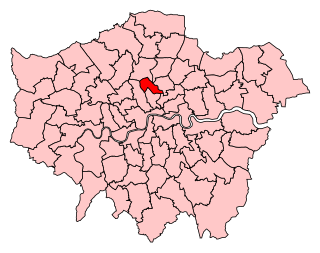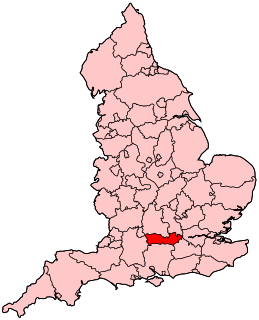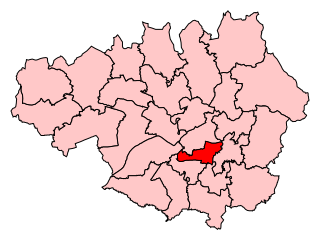Boundary reviews
| Prior to 1885 | Hertfordshire was first represented in the English parliament in the thirteenth century, during the reign of King Edward I. [1] Edward held a meeting of Parliament in the county in 1295. By 1307, the county's representation in parliament consisted of two representatives, known as Knights of the Shire, who represented the county as a whole. In addition, the city of St Albans and borough of Hertford elected two representatives of their own. [1] Parliament's role evolved over the next five centuries, from a body existing primarily to advise the monarch on taxation, into a legislative body in its own right following the English Civil War. However, Hertfordshire's constituency makeup within it remained unchanged until 1832, when the county's representation was increased to 3 MPs by the Great Reform Act. In 1852, St Albans was disenfranchised for electoral corruption and, under the Reform Act of 1867, the representation of the Borough of Hertford was reduced to 1 MP. | |
|---|---|---|
| 1885 | Under the Redistribution of Seats Act 1885, [2] the county was divided into four single-member constituencies, namely the Eastern of Hertford Division (which absorbed the abolished Parliamentary Borough of Hertford), the Northern or Hitchin Division, the Mid or St Albans Division and the Western or Watford Division. |  |
| 1918 | Under the Representation of the People Act 1918, [3] the county division of Hemel Hempstead was created. This was largely formed from the northern half of the Watford Division, incorporating Hemel Hempstead, Berkhamsted and Tring, and also included Harpenden and north-western areas of the St Albans Division. |  |
| 1945 | The House of Commons (Redistribution of Seats) Act 1944 set up Boundaries Commissions to carry out periodic reviews of the distribution of parliamentary constituencies. It also authorised an initial review to subdivide abnormally large constituencies (those exceeding an electorate of 100,000) in time for the 1945 election. [4] As a consequence, the new seat of Barnet was formed from the St Albans constituency, comprising the Urban Districts of Barnet and East Barnet, and the Rural District of Elstree. There were other minor changes to align boundaries with those of local authorities and parishes. [5] |  |
| 1950 | The Representation of the People Act 1948 [6] increased the county's representation once again, from 6 to 7 MPs, with the creation of South West Hertfordshire, which was formed from the old Watford constituency, excluding the part comprising the Municipal Borough of Watford (which formed the redesignated Borough Constituency of Watford). The new seat also included the parish of Abbots Langley, transferred from Hemel Hempstead. Elsewhere, the Rural District of Welwyn was transferred from Hitchin to St Albans, the Rural District of Hatfield from St Albans to Barnet and the parish of Wheathampstead from Hemel Hempstead to St Albans. |  |
| 1955 | The First Periodic Review of Westminster constituencies resulted in the creation of East Hertfordshire from the bulk of the Hertford constituency, with a small rural area transferred from Hitchin. Hertford saw significant changes with only the Municipal Borough and the part of the Rural District of Hertford retained. The Urban District of Welwyn Garden City and the Rural District of Welwyn were transferred from St Albans; the Rural District of Hatfield was transferred from Barnet; and the remainder of the Rural District of Hertford was transferred from Hitchin. [5] |  |
| 1974 | The next national boundary change came into effect for the February 1974 election following the recommendations of the Second Periodic Review [7] and saw significant changes affecting Hertfordshire, partly reflecting the changes to the county's boundaries following the creation of the county of Greater London nine years earlier in 1965. Three new constituencies were introduced, offset by the abolition of two. Only Watford remained unchanged. Barnet was abolished as the Urban Districts of Barnet and East Barnet had been incorporated into the London Borough of Barnet and now formed the basis for the constituency of Chipping Barnet in Greater London. The new constituency of South Hertfordshire was made up as follows:
To compensate St Albans, Harpenden and Redbourn were transferred from Hemel Hempstead. The new constituency of Hertford and Stevenage comprised the following:
The remaining parts of the old Hertford constituency formed the new seat of Welwyn and Hatfield. |  |
| 1983 | The Third Review [8] reflected the 1974 local government reorganisation arising from the Local Government Act 1972 and resulted in another significant redistribution, resulting in the formation of Broxbourne, Hertford and Stortford, Hertsmere, North Hertfordshire, Stevenage and West Hertfordshire, replacing the abolished constituencies of East Hertfordshire, Hemel Hempstead, Hertford and Stevenage, Hitchin and South Hertfordshire – a net increase of one seat. Broxbourne was formed as a Borough Constituency, primarily from southern parts of East Hertfordshire, consisting of the former Urban Districts of Cheshunt and Hoddesdon which had been combined to form the District of Broxbourne under the local government reorganisation. The rest of East Hertfordshire, including Bishop's Stortford and Sawbridgeworth, together with Hertford and Ware from the old Hertford and Stevenage seat, formed the new constituency of Hertford and Stortford. Stevenage was created as a separate constituency. Other changes:
|  |
| 1997 | The Fourth Review [9] saw another increase in the number of constituencies, with the creation of Hitchin and Harpenden and North East Hertfordshire and the re-establishment of Hemel Hempstead, replacing the abolished constituencies North Hertfordshire and West Hertfordshire. Hitchin and Harpenden combined the two towns of Hitchin, previously part of North Hertfordshire, and Harpenden, transferred from St Albans. The remainder of North Hertfordshire (including Letchworth, Baldock and Royston), together with some rural areas of Hertford and Stortford and Stevenage, formed the new constituency of North East Hertfordshire. Hemel Hempstead was reformed from West Hertfordshire, with Tring being transferred to South West Hertfordshire. To compensate for the loss of Harpenden, St Albans gained St Stephens and Park Street, Bedmond, and London Colney from Watford, South West Hertfordshire and Hertsmere respectively. Other movements included the transfers of:
|  |
| 2010 | At the Fifth Review, [10] the Boundary Commission for England decided not to change Hertfordshire's representation. There were marginal changes to boundaries due primarily to the revision of local authority ward boundaries. |  |








